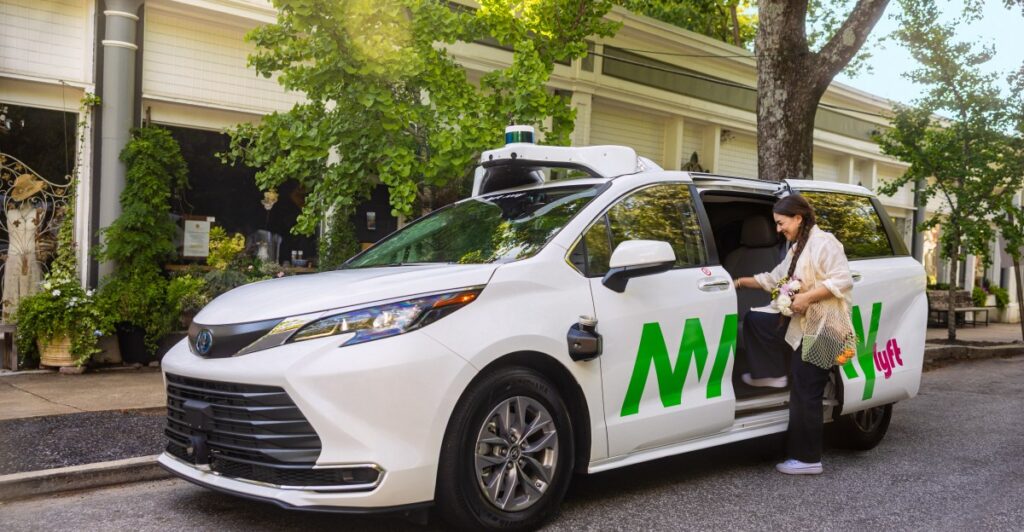
For months, Lyft has watched while its rival Uber made deals with seemingly every autonomous vehicle operator under the sun. But the smaller ridehail company has been quietly building a fleet of its own, and Lyft is ready to launch its first customer-ready robotaxi pilot in Atlanta.
Lyft is teaming up with May Mobility, an Ann Arbor, Michigan-based company that is backed by Toyota and BMW. The fleet is comprised of Toyota Sienna minivans equipped with sensors like cameras, radar, and lidar. The vehicles will operate on both city and suburban streets around Midtown Atlanta in a service area that is approximately 7 square-miles. Lyft customers who request rides within the service area will be given the option to match with a May Mobility autonomous vehicle if they choose.
Lyft is also proceeding cautiously with its first customer-ready AV service in the US. The vehicles will feature “standby operators” — Lyft’s term for safety drivers — in the driver seat. These operators are trained to “take the wheel and drive manually during initial trips, as needed, and will intervene less over time as service is optimized,” the company’s press release states. They will also answer customer questions and ensure the ride is comfortable. In other words, they’re Lyft drivers — that is, until the companies feels confident enough in the safety of their technology to remove them from the vehicle.
The use of safety drivers during the initial phases of a robotaxi rollout is fairly standard by this point. Waymo has used them, and Tesla is currently using safety monitors in its two markets in California and Texas. Currently, only Waymo and Zoox operate fully driverless vehicles without safety drivers in a commercial service.
While its lagged in the number of deals behind its rival, Lyft is also taking a similar approach as Uber by offering its ridehail platform to different self-driving developers who want to connect with customers without having to build their own customer-facing operation. Like Uber, Lyft’s interest is staying as “asset light” as possible, needing other companies to own, operate, and maintain the robotaxi fleet for its customers.
